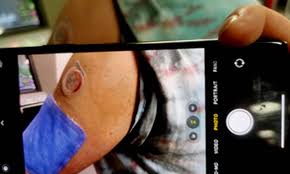June 21, 2024 – In a groundbreaking development, researchers have created a wearable health monitor that measures levels of crucial biochemicals in sweat during physical exercise. This innovation, described in a study published in the journal ACS Sensors, has the potential to revolutionize health tracking and disease diagnosis in a non-invasive manner.
The 3D-printed monitor, developed by a team from Washington State University (WSU), could eventually offer a straightforward method for monitoring health conditions and diagnosing diseases such as diabetes, gout, kidney disease, and heart disease.
The study detailed how the researchers accurately measured levels of glucose, lactate, uric acid, and the rate of sweating in volunteers during exercise. “I think 3D printing can make a difference to the healthcare fields, and I wanted to see if we can combine 3D printing with disease detection methods to create a device like this,” said Chuchu Chen, a WSU PhD student and the first author of the paper.
For their proof-of-concept device, the team utilized a unique, one-step 3D printing process to fabricate the health monitors. This innovative method employed a single-atom catalyst and enzymatic reactions to enhance the signal, allowing for the detection of low levels of biomarkers.
Sweat is an attractive medium for monitoring health because it contains many vital metabolites, but unlike blood sampling, it is non-invasive. For example, levels of uric acid in sweat can indicate the risk of developing gout, kidney disease, or heart disease, while glucose levels are essential for monitoring diabetes. Lactate levels can reflect exercise intensity.
Kaiyan Qiu, Berry Assistant Professor in WSU’s School of Mechanical and Materials Engineering, highlighted the precision of the device, which is designed with very tiny channels to measure both the sweat rate and the concentration of biomarkers. The use of 3D printing allows these micro-channels to be fabricated without any supporting structure, which eliminates contamination issues that can arise during the removal of such structures.
When tested on volunteers’ arms, the monitors provided results that were consistent with lab measurements, demonstrating the device’s accuracy and reliability in measuring chemical concentrations and sweating rates.
This innovative health monitor represents a significant advancement in the field of wearable technology, with the potential to provide continuous, real-time health monitoring and early disease detection. As research and development continue, such devices may become an integral part of personalized healthcare, offering new ways to manage and diagnose health conditions effectively.












